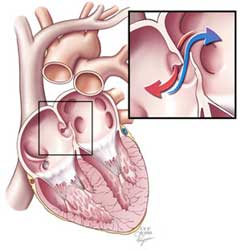Every night since my headache specialist recommended I get tested for a patent foramen ovale (PFO), I have lain in bed at night visualizing my heart with a hole in it. As if imagining and hoping for this defect would make it so. I so desperately want to have this hole in my heart because many migraineurs have experienced a reduction in the frequency and severity of their migraines after having their PFOs closed. This exemplifies one of the strange ways chronic intractable migraine has changed my thinking: I want to need heart surgery because there is a chance that it might finally offer an effective treatment for the migraines.
Wondering what in the world a PFO is and how it relates to migraine? Here’s what I wrote about it in 2008:
The hole, called a patent foramen ovale (or, more commonly, PFO), is an opening between the upper chambers of one’s heart. Some migraineurs who had PFOs closed for another reason reported that their migraine attacks stopped or were much less frequent after the surgery.
The hole is present in fetuses to allow blood to pass from one side to the other. In most people, the gap closes at or after birth. For an estimated 25% of the US population, it doesn’t close completely and the PFO forms. This remaining tunnel functions as a valve. Normally the valve is shut, but sometimes remains open, sending blood that’s supposed to go to the lungs off to the brain and other parts of the body.
Are Migraines Linked to a Heart Defect? is a helpful Q & A in the New York Times from 2010. I can’t find any recent stories on it. What I understand from talking with my headache specialist is that PFO closure has been helpful for migraine with or without aura (most early reports focus only on migraine with aura) and — though I have a hard time believing I heard this correctly — 80% of migraineurs who have PFOs closed report some degree of migraine relief following the surgery.
My fingers are crossed until I get the test results tomorrow.


